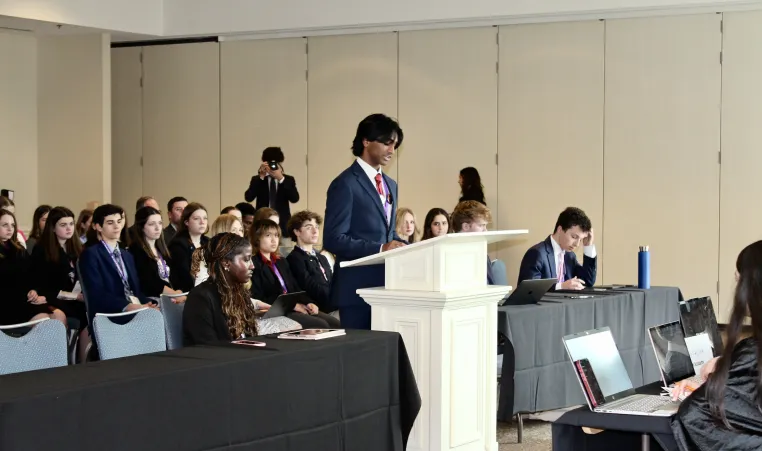By: Eloise Jones and Emma Smith
The Court of Appeals cases have already occurred, those earning a high score will advance to the All-Star round. These attorneys or attorney teams were able to apply their skills, showcase their thorough understanding of their cases and use supporting and strong case law to provide for their powerful arguments. After their closing summations, the associate and chief justices gathered to agree on those to send forward to the All-Star round.
One of the cases discussed in the courtroom today was Mahanoy Area School District v. B.L. In this case, a young high school cheerleader B.L. did not make the Varsity team. B.L. then posted a Snapchat message with explicit language expressing her anger. The school responded by suspending her from the JV Cheerleading team for a year, saying she had violated the school's code of conduct.
In this discussion, the plaintiff utilized their time and brought forth evidence to prove the validity of the Mahanoy School District’s disciplinary actions against B.L. The plaintiff introduced the precedent set by Tinker v. Des Moines Independent Community School District, which concluded that school officials cannot censor student speech unless it materially and substantially disrupts the educational process. It was argued that B.L.’s use of spreading the message on a social media platform made it easily accessible to students and could have negatively impacted students on campus and disrupted activity. The plaintiff argued this showcased why Mahanoy acted in the best interest of the students. Citing the precedent set in Bethel School District v. Fraser, the plaintiff also argued that B.L.'s use of explicit, lewd language in her message was not protected under free speech because of its use on school grounds and distracting impact on classroom activity. The overall conclusion of the plaintiff's argument was that Mahanoy did what was in the best interest of the campus and other students, supported by previous precedents dealing with the proper handling of inappropriate language on a school campus.
Following the prosecution's argument, the respondent was invited to the front to start their argument. The respondent used a case from Tinker v. Des Moines that regulates student speech on campus that disrupts the classroom or the rights of others. Using this precedent, the respondent highlighted the importance of understanding each element of the case at hand. They mentioned that B.L. 's post was only up for ten minutes and was only mentioned in a singular algebra class for five minutes rather than being the main discussion of the whole class. This proves it did not disrupt the focal point of the class itself. As the respondent included the special interest phrase, it could be argued that schools could implicate regulatory interest in times of severe harassment, bullying, lying, threats, etc. However, the respondent argued that in this case, B.L.’s post was not specific to a certain person, it is considered to be criticism. To further their argument, the respondent noted that this is the first time the Mahanoy School District has tried to express any interest in providing in a special interest situation. This led to their argument of a clear abuse of power. For their closing summation, the respondents reverted to a previous argument, reminding the court that B.L. 's story was off-campus speech and did not cause a substantial disruption at school. A student’s freedom of speech amendment is not limited when not directly on a school campus.
After both teams had given their closing statements, the justices were joined in an adjacent room where they had time to discuss which side won. The results were not disclosed but will be announced Sunday during the closing session.
